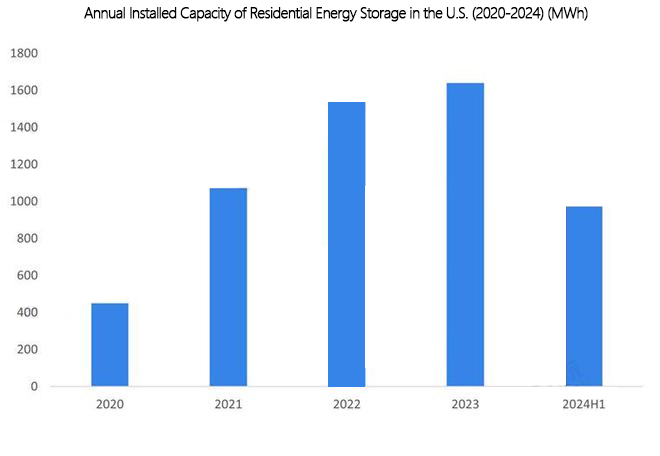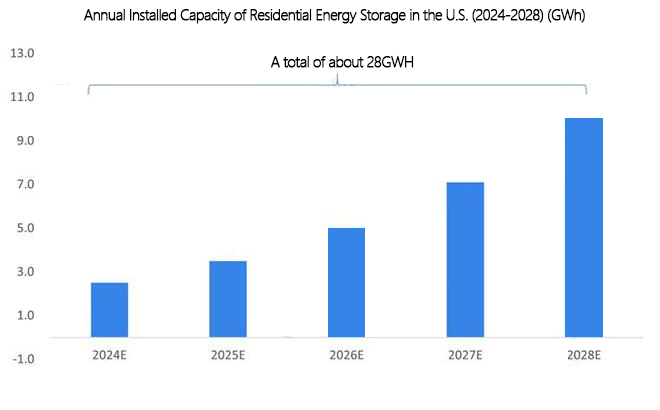In recent years, the US home energy storage market has shown strong growth momentum. According to data from 2023, the newly installed capacity of US home energy storage reached 1,640 MWh, a year-on-year increase of 7%. In the first half of 2024, the newly installed capacity was 973 MWh, and the annual installed capacity is expected to hit a new high, further demonstrating the vitality and potential of the market.
Market Overview
The US home energy storage market is growing steadily, market demand is rising, and as more and more families pay attention to energy independence and safety, the application of energy storage systems has gradually become the key to optimizing energy management.
Industrial Chain Structure
The industrial chain of the US home energy storage market has been basically stable and is divided into three main links:
Upstream: including battery component manufacturers and energy storage supporting manufacturers, responsible for providing raw materials and accessories required for energy storage systems.
Midstream: Manufacturers of home energy storage batteries and systems, responsible for the research and development and production of energy storage systems.
Downstream: Sellers, service providers and final home users of energy storage products, responsible for the sale, installation and maintenance of products.
Market Driving Force
The core driving force of the home energy storage market mainly comes from energy independence and safety. More and more households want to improve their energy self-sufficiency and reduce their dependence on traditional power grids through energy storage systems, especially in areas with unstable power grids or frequent disasters. In addition, electricity price fluctuations are also an important factor driving market growth. With the widespread application of renewable energy (such as solar energy), home energy storage systems not only help households optimize energy management, but also effectively reduce electricity bills.
Policy environment
Although the policy environment in the United States has fluctuated under the changes of different governments, and the Trump administration may weaken some policy support, some states still provide policy support for the development of photovoltaic and energy storage technologies. These policies help drive the continued growth of the home energy storage market, especially against the backdrop of growing demand for environmental protection and energy self-sufficiency.
Technology trends
In recent years, the chemical composition of home energy storage batteries has changed significantly. Traditional nickel-based cathode lithium-ion batteries have gradually been replaced by lithium iron phosphate (LFP) batteries. Lithium iron phosphate batteries are becoming a new trend in the market due to their higher safety, lower cost and longer cycle life. In addition, Chinese companies dominate the supply chain of lithium iron phosphate batteries, and the US government is actively promoting the localization of battery production, aiming to reduce dependence on foreign supply chains.
Conclusion
The US home energy storage market has broad prospects. Despite the uncertainty of policy and market environment, the market is still full of growth potential. With the continuous promotion of energy independence, security and renewable energy applications, the home energy storage market will attract more and more households and enterprises to participate in investment, further promoting the maturity and development of the market.
Post time: Jan-22-2025










